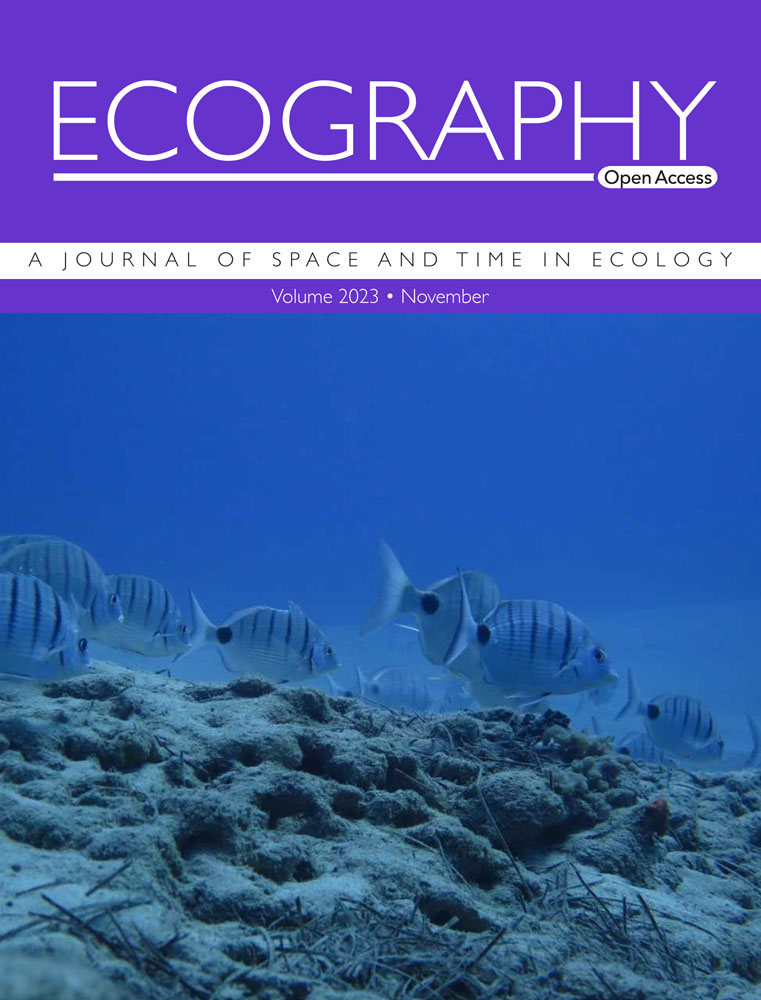将宿主条件整合到时空多尺度模型中可以改善病毒脱落预测
IF 5.4
1区 环境科学与生态学
Q1 BIODIVERSITY CONSERVATION
引用次数: 0
摘要
了解病原体在环境中的发生地点和时间对水库人群的健康和感染风险具有重要意义。在宿主体内,感染状态和病原体脱落受到不同尺度相互作用过程的影响:从影响宿主位置和传播的景观特征到影响宿主免疫和传染性的宿主内部过程。虽然不常见,但同时结合多个尺度的过程可能会改善病原体脱落的预测。在澳大利亚,黑狐翼狐是人畜共患亨德拉病毒的天然宿主,这种病毒被认为会在蝙蝠中引起潜伏感染。宿主条件差可能引发病毒的再激活和脱落,导致病毒通过尿液排出。在这里,我们开发了一种统计建模方法,该方法结合了多个时空尺度的数据,以捕捉可能影响病毒脱落的生态和生物过程。我们使用现有数据集对这些模型进行了参数化,并将模型性能与横跨1200公里样带的23个栖息地2011-2014年的栖息地下病毒脱落数据进行了比较。我们的方法可以在多个模型结构之间进行比较,以确定在哪个尺度上哪些变量对准确预测病毒在空间和时间上的脱落最有影响。我们确定了这些特征的环境预测因子和时间滞后,这些特征对于确定储层的位置和储层条件的多个独立代理非常重要。表现最好的多尺度模型描述了病毒低流行率和高流行率的时期,反映了从汇集的窝下样本中观察到的脱落模式。纳入粮食短缺的区域指标提高了模型的准确性,而在局部尺度上纳入其他压力指标则混淆了这一信号。这种多尺度建模方法结合了不同生态尺度的过程,并确定了影响亨德拉病毒脱落的环境变量,强调了跨尺度整合数据如何提高对其他病原体系统的风险预测。本文章由计算机程序翻译,如有差异,请以英文原文为准。
Integrating host condition into spatiotemporal multiscale models improves virus shedding predictions
Understanding where and when pathogens occur in the environment has implications for reservoir population health and infection risk. In reservoir hosts, infection status and pathogen shedding are affected by processes interacting across different scales: from landscape features affecting host location and transmission to within-host processes affecting host immunity and infectiousness. While uncommonly done, simultaneously incorporating processes across multiple scales may improve pathogen shedding predictions. In Australia, the black flying fox Pteropus alecto is a natural host for the zoonotic Hendra virus, which is hypothesized to cause latent infections in bats. Re-activation and virus shedding may be triggered by poor host condition, leading to virus excretion through urine. Here, we developed a statistical modeling approach that combined data at multiple spatial and temporal scales to capture ecological and biological processes potentially affecting virus shedding. We parameterized these models using existing datasets and compared model performance to under-roost virus shedding data from 2011–2014 in 23 roosts across a 1200-km transect. Our approach enabled comparisons among multiple model structures to determine which variables at which scales are most influential for accurate predictions of virus shedding in space and time. We identified environmental predictors and temporal lags of these features that were important for determining where reservoirs are located and multiple independent proxies for reservoir condition. The best-performing multiscale model delineated periods of low and high virus prevalence, reflecting observed shedding patterns from pooled under-roost samples. Incorporating regional indicators of food scarcity enhanced model accuracy while incorporating other stress indicators at local scales confounded this signal. This multiscale modeling approach enabled the combination of processes from different ecological scales and identified environmental variables influencing Hendra virus shedding, highlighting how integrating data across scales may improve risk forecasts for other pathogen systems.
求助全文
通过发布文献求助,成功后即可免费获取论文全文。
去求助
来源期刊

Ecography
环境科学-生态学
CiteScore
11.60
自引率
3.40%
发文量
122
审稿时长
8-16 weeks
期刊介绍:
ECOGRAPHY publishes exciting, novel, and important articles that significantly advance understanding of ecological or biodiversity patterns in space or time. Papers focusing on conservation or restoration are welcomed, provided they are anchored in ecological theory and convey a general message that goes beyond a single case study. We encourage papers that seek advancing the field through the development and testing of theory or methodology, or by proposing new tools for analysis or interpretation of ecological phenomena. Manuscripts are expected to address general principles in ecology, though they may do so using a specific model system if they adequately frame the problem relative to a generalized ecological question or problem.
Purely descriptive papers are considered only if breaking new ground and/or describing patterns seldom explored. Studies focused on a single species or single location are generally discouraged unless they make a significant contribution to advancing general theory or understanding of biodiversity patterns and processes. Manuscripts merely confirming or marginally extending results of previous work are unlikely to be considered in Ecography.
Papers are judged by virtue of their originality, appeal to general interest, and their contribution to new developments in studies of spatial and temporal ecological patterns. There are no biases with regard to taxon, biome, or biogeographical area.
 求助内容:
求助内容: 应助结果提醒方式:
应助结果提醒方式:


